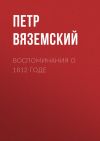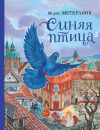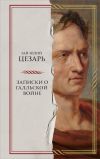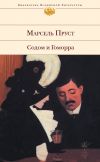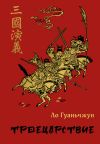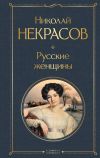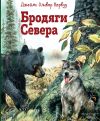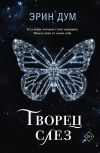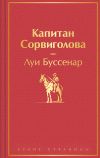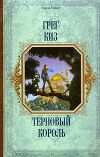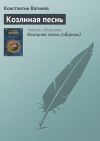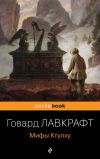Текст книги "Мифология пространства древней Ирландии"

Автор книги: Григорий Бондаренко
Жанр: Прочая образовательная литература, Наука и Образование
сообщить о неприемлемом содержимом
Текущая страница: 22 (всего у книги 22 страниц)

Горизонтальное пространство Ирландии согласно средневековой традиции

Сид Бодб (Шлиав-на-Ман), гора правителя сидов Мунстера, Бодба Дерга

Камень Деления на холме Ушнех в центре Ирландии

Данманог (Dun Mo Shenoc), местность, в традиции связанная с дубом Эо Мугна. Развалины церкви поросли плющом

Церковь в Шон Лохлинне на месте монастыря, основанного св. Лашреном

Площадь в Шон Лохлинне, где издавна росли почитаемые деревья

Церковь в Ардбреккане (XII в.) недалеко от места, где стояла церковь, по традиции основанная св. Патриком

Колодец св. Ултана в Ардбреккане с растущими рядом ясенями

Сент-Моллинс, монастырь, основанный св. Моллингом
Summary
Grigori Bondarenko. Mythology of space in Early Irish literature.
The monograph is devoted to a phenomenon of five major roads and five sacred trees of Ireland which almost never attracted scholars» attention before. The five major roads of Ireland (Slige Midlúachra, Slige Cualann, Slige Assail, Slige Dala and Slige Mór) just like its five sacred trees (Eó Mugna, Eó Rossa, Bile Tortan, Bile Dathi, Bile Uisnig), five hostels or five provinces, belong to the mythological tradition, having its roots in pre-Christian times, the tradition whose integral element was the fivefold division of the island. It is important to warn in advance that the major part of all events, protagonists and realities mentioned in the book are related to mythological space and time, considered by medieval redactors in Ireland as a distant synthetic past of the island. Basically all scholars touching the subject of the five roads of Ireland often pointed out their role in history (or pseudohistory) as routes connecting Tara, the royal residence, with the rest of Ireland, underlying the increasing significance of Tara’s high-kingship since the time of Uí Neill. The five major roads of Ireland did not appear in the later Irish folklore, they belonged to the classical repertoire of Irish filid and with the collapse of independent rulers and traditional poetic schools the memory of these features of landscape was lost.
One can argue that all these phenomena constitute pieces of the distinct cosmology reflected sometimes in early Irish texts. Filid – poets and keepers of tradition – acted as intermediaries between ancient oral tradition and texts written in monasteries. That is why the stories of the five roads and trees were fixed in several specimens of early Irish literature. The most interesting problem for us here lies in the function of the five roads and trees in the general picture of the fivefold division of Ireland. We shall try to examine the story of the roads» manifestation, their role in the cosmogonic myth of Conn Cétchathach’s birth. Just like the five trees of Ireland, the five roads appear in Ireland on the night of Conn’s birth, and just like the trees they are in some instances associated with the poets (filid), poetry (rámut roscadach in the alliterative poem, which we shall discuss later) and knowledge. Their unique position in the tradition, their, as it were, «primordial» status (as in prímróit) makes the five roads different from other roads of the country mentioned in Irish literature. The five roads and trees of Ireland can be seen as one of those «gravitation centres» around which in the Summary.
The monograph is devoted to a phenomenon of five major roads and five sacred trees of Ireland which almost never attracted scholars» attention before. The five major roads of Ireland (Slige Midlúachra, Slige Cualann, Slige Assail, Slige Dala and Slige Mór) just like its five sacred trees (Eó Mugna, Eó Rossa, Bile Tortan, Bile Dathi, Bile Uisnig), five hostels or five provinces, belong to the mythological tradition, having its roots in pre-Christian times, the tradition whose integral element was the fivefold division of the island. It is important to warn in advance that the major part of all events, protagonists and realities mentioned in the book are related to mythological space and time, considered by medieval redactors in Ireland as a distant synthetic past of the island. Basically all scholars touching the subject of the five roads of Ireland often pointed out their role in history (or pseudohistory) as routes connecting Tara, the royal residence, with the rest of Ireland, underlying the increasing significance of Tara’s high-kingship since the time of Uí Neill. The five major roads of Ireland did not appear in the later Irish folklore, they belonged to the classical repertoire of Irish filid and with the collapse of independent rulers and traditional poetic schools the memory of these features of landscape was lost.
One can argue that all these phenomena constitute pieces of the distinct cosmology reflected sometimes in early Irish texts. Filid – poets and keepers of tradition – acted as intermediaries between ancient oral tradition and texts written in monasteries. That is why the stories of the five roads and trees were fixed in several specimens of early Irish literature. The most interesting problem for us here lies in the function of the five roads and trees in the general picture of the fivefold division of Ireland. We shall try to examine the story of the roads» manifestation, their role in the cosmogonic myth of Conn Cétchathach’s birth. Just like the five trees of Ireland, the five roads appear in Ireland on the night of Conn’s birth, and just like the trees they are in some instances associated with the poets (filid), poetry (rámut roscadach in the alliterative poem, which we shall discuss later) and knowledge. Their unique position in the tradition, their, as it were, «primordial» status (as in prímróit) makes the five roads different from other roads of the country mentioned in Irish literature. The five roads and trees of Ireland can be seen as one of those «gravitation centres» around which in the dinnshenchas and in early Irish tales the mythological situation unfolds itself. The restoration of the mythological situation, roles played by space, time and knowledge in it, on the basis of these «gravitation centres», might be one of the perspective fields in Celtic studies. I shall try to examine mainly the mythological situation connected with the manifestation of roads and trees as it is described in Airne Fíngein («Fíngen’s Night-Watch») and in the dinnshenchas, one alliterative poem from which, «Búaid Cuinn, rígróid rogaide…», has not been edited before.
We examined the story of the manifestation of the roads and the trees, which might be seen as a variant of a cosmogonic myth. It is important that the texts do not mention the creation of the roads, the trees and other wonders on the night of Conn’s birth; all of them are found or manifest themselves out of pre-existence in the Otherworld. The five roads and trees of Ireland belong to the same fivefold structure of space in Irish mythology as five provinces and other phenomena. When the roads as well as the five trees manifest themselves from the Otherworld on earth they act as representatives of the divine order on earth. In case of the five sacred trees of Ireland, they were considered by the medieval redactors as the witnesses of the Paradise on earth (just like Eó Mugna in AF is said to be «the son of the tree of Paradise»). As far as one can argue on the basis of our sources, the domestication of space in the discussed mythological texts consists of the process of forming the earthly order following the divine pattern.
As M. Eliade wrote, no human being never chooses any particular place, he just finds it, in other words the sacred space is manifested to a hero. This manifestation does not necessary come from a direct hierophany; sometimes it is performed with the help of a certain traditional technique based on the cosmological system[613]613
M. Eliade. Traité d’histoire des religions. Paris, 1948. P. 255.
[Закрыть]. Our heroes perform this very technique while opening the roads.
As for the time reflected in our plot, we have to stress that the roads and the trees as well as other phenomena are manifested during a limited period of one night. The situation is that the mythological time on this night is condensed and pressed[614]614
Cf. Т. В. Цивьян. Движение и путь в балканской модели мира. М., 1999. С. 126—127.
[Закрыть], in the same way the mythological space is limited and condensed along the roads: so to say the rules of our mythological game limit both time and space. As a result condensed time and space imply different pattern of actions in them. This condensed time and space is quite characteristic for any cosmogonic myth.
Finally, we have to stress the importance of the concept of knowledge in all the plots that we have examined. There is a term rot imbais «the road of knowledge» found in AF and referring to the river Boyne which is quite similar to the concept of ramut roscadach «the road of roscada» in our alliterative poem. In all our stories it is either the knowledge of the roads and the trees that is revealed to Fíngen by Rothníam and to Amorgein by Fintan or knowledge is revealed on the roads as in Conaire’s story in TBDD.
Another significant aspect of our mythologem is the importance of number in Celtic myth. Five is the number often found in Irish and other Celtic sources. We know of different groups of five phenomena counted in early Irish literature: five provinces, five sacred trees, five hostels, five sages etc. Especially interesting in our case is the parallel with the five sacred trees of Ireland, which also seem to appear on the night of Conn’s birth. Both our main sources, AF and the dindshenchas, contain the story of the five sacred trees. The trees, Eó Mugna or Eó Rossa in AF, manifest themselves out of the magic mist (tria chéo) from the world of pre-existence (síd). The manifestations of these wonders at the same night signified, together with the birth of the new king, the beginning of a new cycle (renovatio seculi). In the Welsh tradition connected with a famous poet Taliesin we find a notion of five trees as well, they are asociated there with knowledge and inspiration. Ceridwen’s cauldron of poetic inspiration is called in the poem Kadeir Taliesin («The Chair of Taliesin») from the Book of Taliesin «the cauldron of five trees» (peir pum6yd)[615]615
W. F. Skene. The Four Ancient Books of Wales. Vol. II. Edinburgh, 1868. P. 153.
[Закрыть].
The place of numbers in mythology is that of a certain numerical code, with which the world is described (or it can be the system of metadescription itself, that is described). Myth explains itself through numbers. In archaic traditions the numbers could have been used in situations marked as sacred or «cosmizing», as in our mythological situation. Thus, numbers become the image of the world and then, the tools of its periodical remanifestation in the cyclical scheme of evolution in order to overcome destructive tendencies. They are the tools of cosmogony or cyclical restoration of cosmic order. The cyclical scheme seems to be present in Celtic mythology (as an integral part of its manifestationalist doctrine).
Cosmogony or cyclical restoration of cosmic order in Irish myth is shown always as manifestation. The manifestationalist perspective is similar to a concept of «constant creation», because the world here is understood as an open system. The manifestation in myth could have been taken as an example of a ritual.
Objects in the mythological thinking are defined as operational («how was it done? how was it named? how has it happened? why? cid búaid? canas ro ainmniged?»). That is why the actual model of the world is inevitably connected with cosmological schemes and with the pseudo-historical tales, which are considered to be precedents, serving as a pattern to be re-enacted in the future just because the patterns of actions in these tales are set in Urzeit. Our mythological and pseudo-historical tale, combines in itself two aspects – diachronic (an account about idealised past) and synchronic (describing idealised present or sometimes future).
Правообладателям!
Это произведение, предположительно, находится в статусе 'public domain'. Если это не так и размещение материала нарушает чьи-либо права, то сообщите нам об этом.




